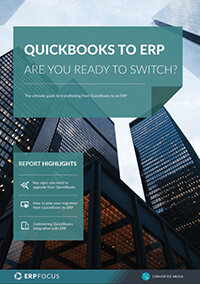Changing ERP Systems: Part Two – Opportunities
As you are thinking about changing ERP systems, evaluate not only the business fit of the transactional software package you are considering, but also how well that software will interact with other third-party software. In your first ERP implementation, you lacked the sophistication to investigate this area in advance; all of your effort was exhausted trying to understand whether you were likely to be able to manufacture and deliver a customer order.
By “other third-party software” we are referring to the software applications that are important to your business, but not an important feature of your ERP replacement software. When you installed ERP the first time, for instance, the amount of time and money it took to rewrite the mapping and error loop rules for EDI transaction was probably an unpleasant surprise. Will it be an unpleasant surprise again?
Don’t Forget Your Customers
Since your first ERP implementation, have many of your customers gotten comfortable interacting with you via your web site? If so, will the transition be seamless to them, or will they find that functionality they have come to value is temporarily (or permanently) out of service? Customer touchpoints like these are very dicey when changing ERP systems, because even though the tasks of implementing a new ERP system have not decreased dramatically, customer expectations of how those tasks will be executed have increased dramatically. Few customers today excuse poor service because of a computer upgrade.
How does the proposed ERP replacement dovetail with your customer service call center? Can it interact with your E-mail system? What affect will the ERP change have on your security access roles and definitions? Are significant hardware or infrastructure changes required to handle the new software? How will you test the ERP replacement software on any hosted or cloud applications you might be evaluating?
Don't Throw Out the Best Bits
And, of course, the eight hundred pound gorilla is what affects changing ERP systems will have on your data warehouse/business information system. Will the past integrate nicely with the future, or will you essentially lose visibility of everything that happened on the old ERP system? Will the dashboards that took so long to construct and test and prove out – that everyone now depends on – be in place and accurate on the first day of replacement, or will everything require rebuilding?
The bottom line to keep in mind is that even though your previous experience with implementing and operating an ERP system will make the replacement process easier, expectations – from customers and company leadership – are also much higher. There will not be the feeling of this being a great adventure like it was the first time around, so be relentless about pinning ERP vendors down on a broader range of questions than you knew to ask back then.
Free white paper

ERP Implementation: 9 steps to success
The 9 proven steps you should follow when implementing ERP

Featured white papers
-

Quickbooks to ERP: Are You Ready to Switch?
Get the definitive guide to converting your business from Quickbooks to ERP
Download
Related articles
-

Making you think: The struggle of changing habits
How to handle changing your employees' system habits when implementing a new ERP
-

Secret KPI: Why Your ERP Implementation Team Matters More Than Software
Learn how Godlan ensures successful ERP implementation for manufacturers with proven strategies &...
-

Digital transformation or ERP transformation?
What is digital transformation and how does it relate to ERP?

